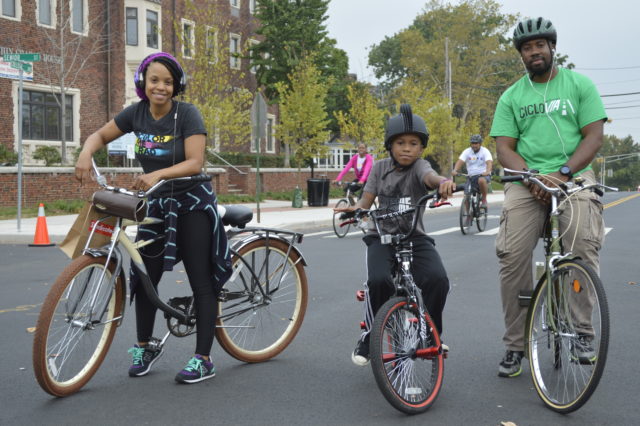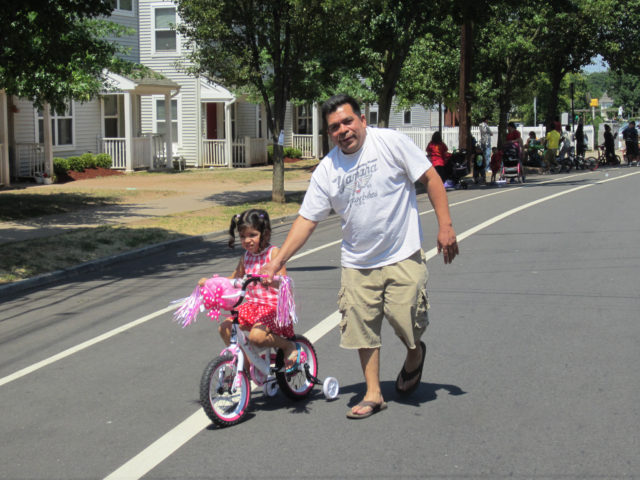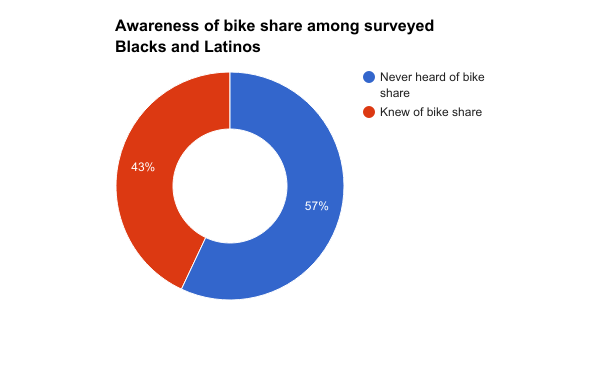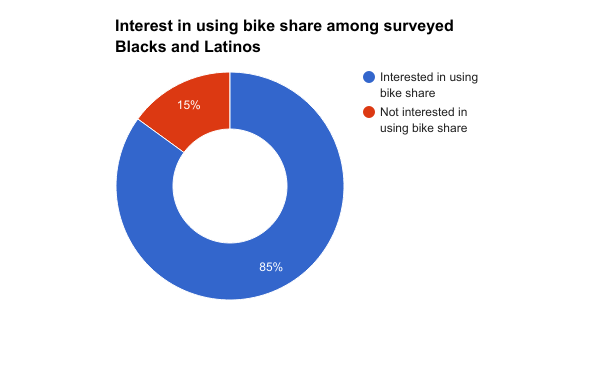Silent barriers to bicycling, part I: Exploring Black and Latino bicycling experiences
by Stefani Cox and Charles Brown
February 15, 2017

Source: New Jersey Bicycle and Pedestrian Resource Center.
Advocates often aim to make cycling a more accessible resource for Blacks, Latinos, and other underrepresented groups. But they may be missing one of the biggest deterrents to bicycling among this population — fear for personal safety.
Blacks and Latinos, as well as low-income populations, cycle more regularly than whites overall. However, bicycling is still a largely underutilized transportation mode across all racial and ethnic groups. Charles T. Brown and James A. Sinclair, both researchers at Rutgers’ Alan M. Voorhees Transportation Center, realized that the existing literature on barriers to bicycling among Black and Latinos was far too sparse. So, they teamed up to find out what was missing, and presented the work at the 2017 Transportation Research Board’s annual meeting.
What they found is critically important for bicycling and bike share advocates to understand. While commonly understood fears of traffic collisions rank first in terms of obstacles to bicycling, personal safety factors such as crime and racial profiling are highly underexamined issues that influence Blacks and Latinos when deciding whether to bike or not.
Here on the blog, we’ll be exploring Brown and Sinclair’s findings through a four-part series. Today, we’ll take a bird’s-eye view of the study and talk about how it relates to bike share. In the coming weeks we’ll go further into the topics of crime, racial profiling, and infrastructure access, respectively, as well as the power dynamics that communities run up against that make it challenging for them to instigate change.

Source: New Jersey Bicycle and Pedestrian Resource Center.
The study design
Brown and Sinclair wanted to learn more about the factors that could encourage Blacks and Latinos to bike, as well as examine obstacles.
The researchers conducted their study in two parts. First, they did an intercept survey of 2,062 pedestrians in various New Jersey municipalities. Of that total, 1,660 respondents were Black, Latino, or mixed race. This was the group that Brown and Sinclair focused on in their analysis.
Notably, 40 percent of the individuals who responded to the survey had not spent the first 12-13 years of their lives in the United States. This means that the study could have rich implications for understanding the bicycling motivations for immigrant populations in particular.
The second part of the study consisted of two focus groups that the researchers led. One group was held with Blacks in English, and the other with Latinos in Spanish. All focus group participants were paid and fed for their time.
The bike share connection
In the next few weeks we’ll talk more about what the research results say about fear for personal safety among would-be Black and Latino cyclists, as well as what those results might mean for transportation professionals in general. But the study has some specific results for bike share as well.
One finding from Brown and Sinclair’s research was that over half of Blacks and Latinos surveyed had not yet heard of bike share. So there is a potential market (at least in New Jersey) for such individuals to access the transportation and recreational benefits of bicycling through bike share.

In fact, the vast majority of Blacks and Latinos surveyed indicated that they would be interested in using bike share. But if bike share doesn’t feel like an accessible resource because of personal safety concerns as well as expected traffic safety fears, then it will be important for transportation professionals to step up and really investigate how to address those challenges.

We also know that bike share can feel like an inaccessible resource to many low-income communities and communities of color due to physical distance. Particularly during the early stages, bike share is often concentrated in more affluent neighborhoods within a city, such as central business districts.
The work that is being done to expand bike share systems into marginalized communities in cities like Philadelphia and Chicago can serve as a foundation for initiatives addressing personal safety concerns. The underlying issue to address moving forward is the lack of access to political power that many marginalized communities sense.
Up Next
Our next post will examine the fear of crime that many Blacks and Latinos experience when deciding whether or not to bicycle. Stay tuned for that discussion, as well as a deeper look at the fear of racial profiling and lack of bicycle infrastructure access in the coming weeks.
Here are the additional posts in our series:
>Silent barriers to bicycling, part II: Fear of crime among Blacks and Latinos
>Silent barriers to bicycling, part III: Racial profiling of the Black and Latino community
>Silent barriers to bicycling, part IV: Infrastructure in Black and Latino neighborhoods
This post was written by Stefani Cox, MCP, Equity Writer at PeopleForBikes and edited by Charles Brown, MPA, Senior Researcher and Adjunct Professor at Rutgers University.
The Better Bike Share Partnership is a JPB Foundation-funded collaboration between the City of Philadelphia, the Bicycle Coalition of Greater Philadelphia, the National Association of City Transportation Officials (NACTO) and the PeopleForBikes Foundation to build equitable and replicable bike share systems. Follow us on Facebook, Twitter and Instagram or sign up for our weekly newsletter. Story tip? Write stefani@peopleforbikes.org.
